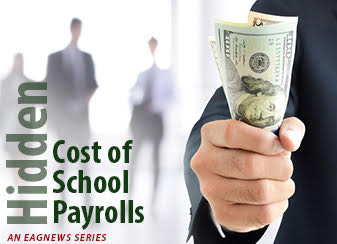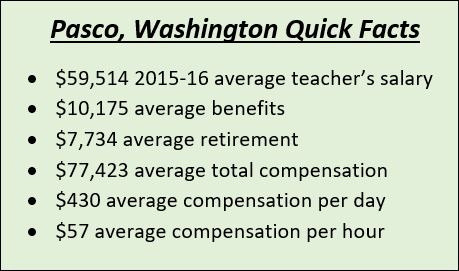PASCO, Wash. – In September 2015, teachers in the Pasco, Washington school district walked out on strike, postponing the beginning of the new school year.
 The main issue was compensation for teachers. They wanted higher salaries and better benefits. The strike was settled was settled after nine days, with the teachers receiving a four percent pay increase.
The main issue was compensation for teachers. They wanted higher salaries and better benefits. The strike was settled was settled after nine days, with the teachers receiving a four percent pay increase.
MORE NEWS: Know These Before Moving From Cyprus To The UK
There are bound to be more labor problems in the Pasco district soon, when the negotiated labor agreement expires. The union will once again claim that teachers are dramatically underpaid and deserve higher pay and better benefits.
Before that situation arises, residents of the Pasco district should know how much the teachers really earn, with everything added up.
In the 2015-16 fiscal year, 1,116 Pasco teachers were paid a combined $66,305,237 in base salary. That averages out to $59,514 per teacher.
They also received $11,355,477 in benefits, which averages out to $10,175 per teacher.
The school district paid a total of $8,631,208 on their behalf in retirement contributions. That averages out to $7,734 per teacher.
 So the average teacher compensation in Pasco (without figuring in smaller bonuses and benefits) totaled $77,423 — $17,909 more than the average base salary.
So the average teacher compensation in Pasco (without figuring in smaller bonuses and benefits) totaled $77,423 — $17,909 more than the average base salary.
MORE NEWS: How to prepare for face-to-face classes
Pasco teachers work 180 days per year, so the average total teacher compensation breaks down to about $430 per day. They are required to work no more than 7 ½ hours per day, so the average daily wage breaks down to about $57 per hour.
Let’s look at a few individual teachers.
Robert Antonovich made $98,093 in salary, $10,220 in benefits, and the district made a $13,195 retirement contribution on his behalf. That totals $121,508.
Steven Graff made $85,275 in salary, $10,937 in benefits, and the district made an $11,196 retirement contribution in his behalf. That totals $107,408.
That list goes on and on, and the high cost of health coverage and other benefits added up for the district.
And those costs continue to rise pretty much every time a school board and teachers union sit down to negotiate a new contract.


Join the Discussion
Comments are currently closed.